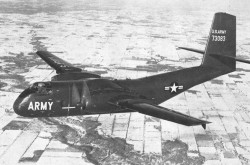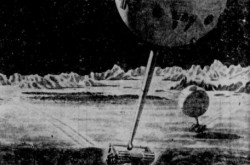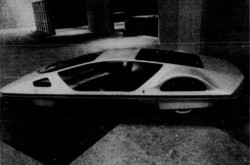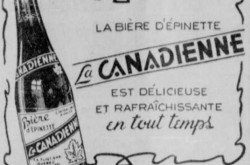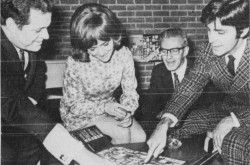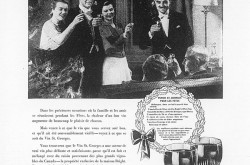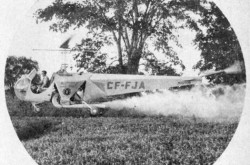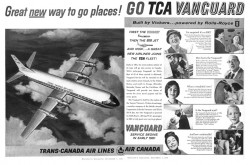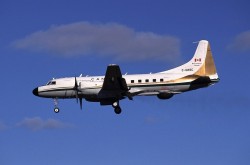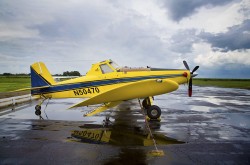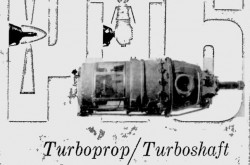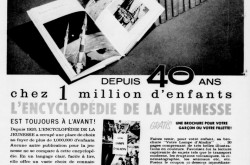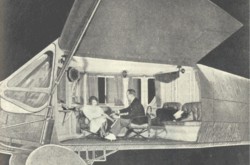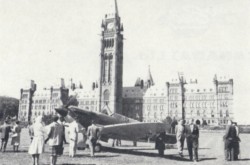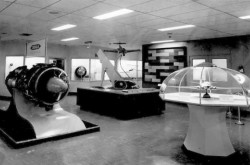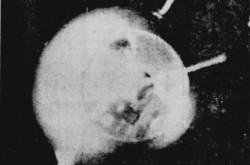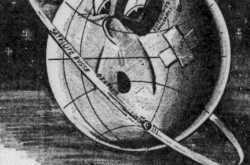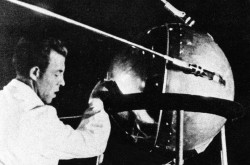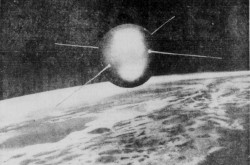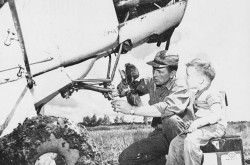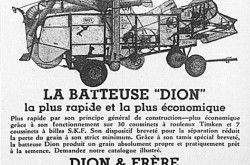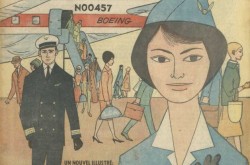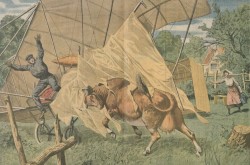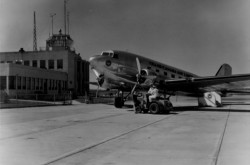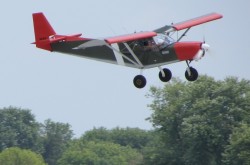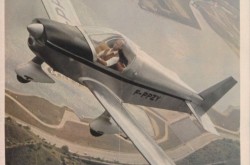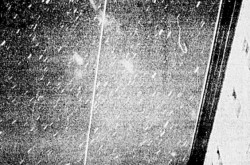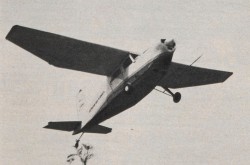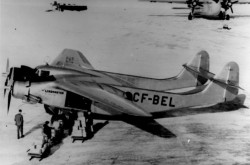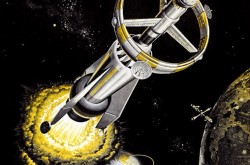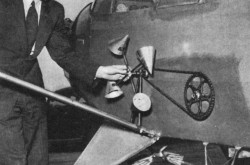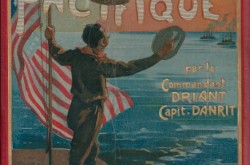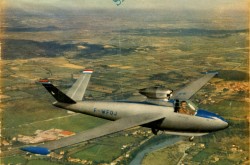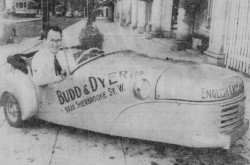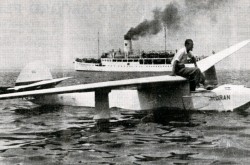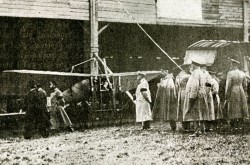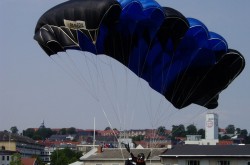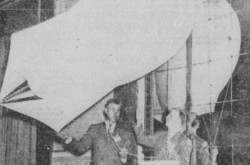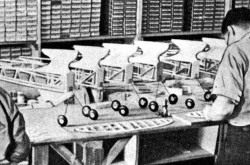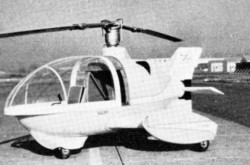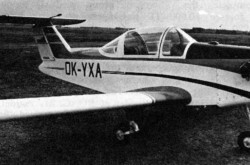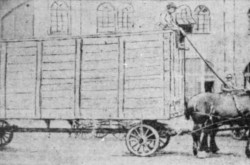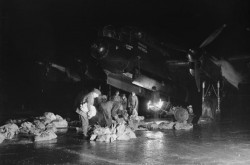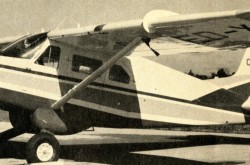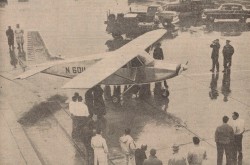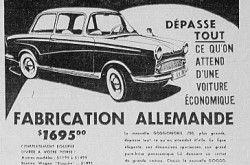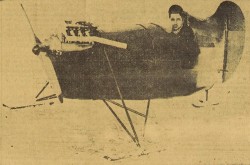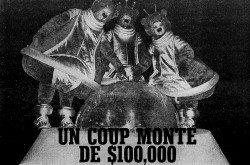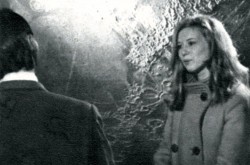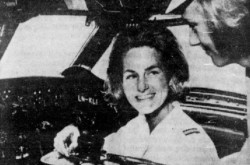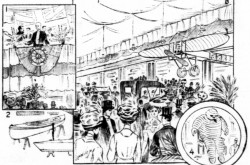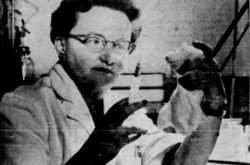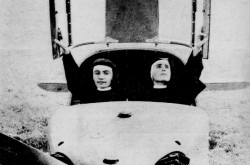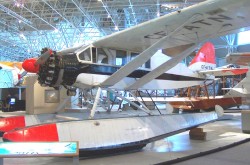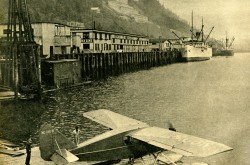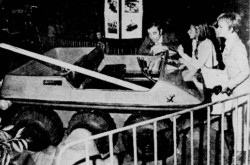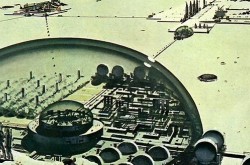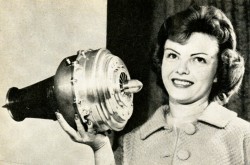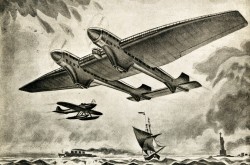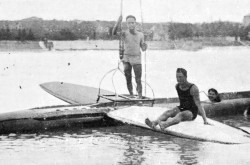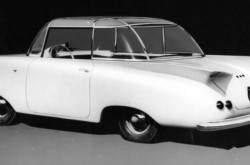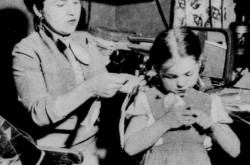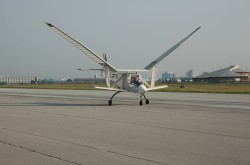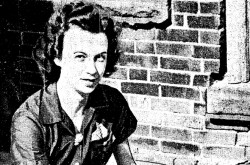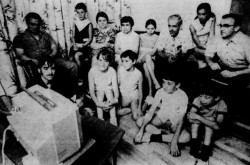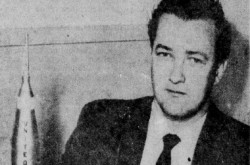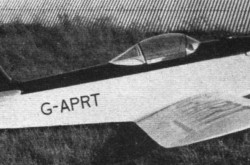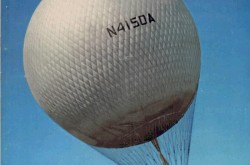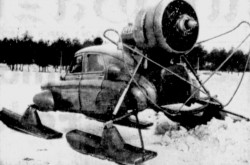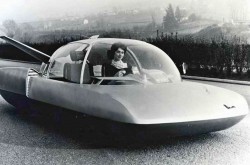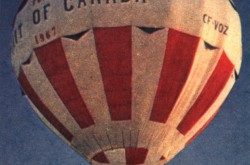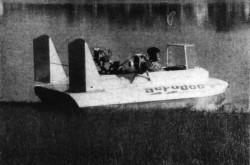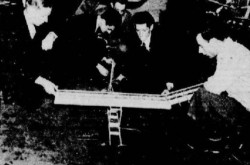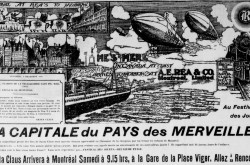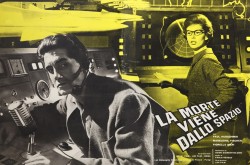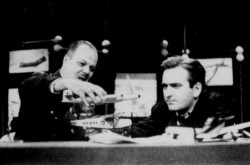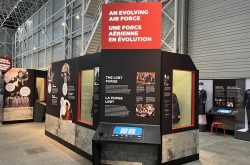It seemed like a good idea at the time: The bananas of the British Cameroons and the Cushioncraft CC1 hovercraft
How are you doing on this day, my reading friend?
Yours truly has a confession to make: there is more to life than airplanes – and I have to thank a former colleague for pointing this out, many years ago. (Hello, CF!) A list of items covered in this non aeronautical category would be very long. Any list worthy of the name should, however, include Belgian style beer, and no, not a serrano pepper infused one, dinosaurs and pterosaurs (Hello, SB, EG and EP!), as well as air cushion vehicles. In other words, hovercrafts. What is a hovercraft, you ask? The question in itself pains me. It shows how little people remember a go-anywhere machine which promised to revolutionise transportation in fairly flat areas where conventional vehicles could not, and still cannot, go – from Arctic tundra to equatorial swamps.
A hovercraft uses blowers of some sort to pack a huge volume of air underneath its hull. This air is typically contained within a flexible skirt. One or more engine-driven propellers usually provide the thrust needed to move the hovercraft. Channelling some of the air sucked in by the blowers will work just as well, as least for relatively small vehicles.
What yours truly found in the August 1960 edition of the sadly defunct monthly magazine Canadian Aviation was a photograph with a caption.
The story of the hovercraft in that photograph arguably began in 1946, in the United Kingdom, at the de Havilland Aeronautical Technical School, a technical school founded by de Havilland Aircraft Company Limited, a very well-known aircraft manufacturing firm mentioned in February 2018 and September 2019 issues of our blog / bulletin / thingee.
Forester Richard John Britten and Nigel Desmond Norman, respectively born in May 1928 and August 1929, met at that school in 1946 and became fast friends. Having completed their studies, this dynamic duo designed, built and raced several racing sailboats in the late 1940s and, perhaps, early 1950s.
Britten and Norman, who were both pilots by then, designed, built and tested, in May 1951, the Britten Norman BN-1 Finebee. This single seat light / private airplane designed in part to help relaunch private flying in the United Kingdom had issues, however, and was not put in production.
Britten and Norman founded Britten-Norman Limited, a firm mentioned in a May 2018 issue of our you know what, in 1953. By then, the 2 men had come to realise that airplanes could play a significant role in pest control. Joining forces with an Australian pilot, a pioneer of agricultural aviation in that country actually, James “Jim” McMahon, they acquired several war surplus de Havilland Tiger Moth (Hello, EP!) elementary training biplanes and converted them into agricultural airplanes. Some of the work was done in a deconsecrated church. Several Tiger Moths were exported to New Zealand.
A British-based agricultural application firm, Crop Culture Limited, later known as Crop Culture (Aerial) Limited, was formed around 1955. Before long, it became one of the largest firm of its type in the world, with up to 80 aircraft in its fleet. Britten, Norman and McMahon seemingly piloted agricultural airplanes in Africa, in places like the Anglo-Egyptian Sudan and the British Cameroons, during the early days of the firm.
Interestingly, at least to yours truly, Britten and Norman formed Micronair Limited in April 1956, to develop and produce the rotary atomiser recently designed by Austro Briton Thomas Julius Bals to reduce both the amount of chemicals needed to destroy pests and the ensuing pollution. The spraying system developed by Micronair formed the basis of the systems used around the globe for many years after that date.
While spraying banana plantations in the British Cameroons, a United Nations trust territory in Africa controlled by the United Kingdom, Britten and Norman saw how difficult it was to transport these fragile fruits from said plantations to the ships which would carry them to Europe and North America. Once back in the United Kingdom, they set out to design, you guessed it, a hovercraft – the second one in the world to be tested as a matter of fact. Hovercrafts, thought Britten and Norman, could be used to carry bananas more or less from the plantations to the ships which would carry them to Europe and North America.
The development of the Britten-Norman BN-1 Cushioncraft, a 3-seat vehicle soon renamed Britten-Norman CC1 Cushioncraft, so that it would not be confused with the aforementioned Finebee, was financed by a British fruit distribution firm, Elders & Fyffes Limited, owned by an American fruit distribution giant specialising in bananas, the (in)famous United Fruit Company.
A firm with friends in very high places, in Washington, District of Columbia, whose tentacles spread across Central American and the Caribbean, United Fruit controlled vast territories and transportation networks (trains and ships). Its tight grip on that corner of our globe, an odd expression given that a sphere has no corner, and the Earth is a sphere, trust the Flying Spaghetti Monster on that, its grip was such, say I, that it led to the use of the expression banana republic to describe countries like Costa Rica, Guatemala and Honduras whose major figures may have seen their bank accounts grow surprisingly fast.
Would you believe that said expression burst forth from the brilliant mind of up-and-coming American short story writer giant William Sydney Porter, better known as O. Henry, in 1896?
Incidentally, the banana in question was the Gros Michel variety, informally known as “Big Mike,” not the Cavendish banana found in supermarkets these days, at least for now. For now, you say (type?), my reading friend? Yes, for now, say I. You see, my increasingly concerned reading friend, Gros Michel banana plantations were almost obliterated by a deadly disease during the 1950s and 1960s – and an equally deadly disease is presently attacking Cavendish banana plantations in several countries. Shoving aside diversity to increase profits is very nice, until some sort of pest comes along, but back to our story.
Designed and fabricated over a period of 8 months, the Britten-Norman BN-1 Cushioncraft / CC1 Cushioncraft “flew” for the first time in June 1960. You will remember that it carried a British civilian aircraft registration, and… You don’t remember, now do you? Sigh… Never mind.
Sadly, the CC1 proved difficult to control. On one occasion, the pilot allegedly gently / slowly slid down a slight incline and could not climb back up. A crane had to be used to lift the CC1 and take it up the incline. Said crane may have been used more than once.
Incidentally, Cushioncraft Limited, a subsidiary of Britten-Norman, came into existence in 1960.
The following year, the northern part of the British Cameroons joined the newly independent country of Nigeria, formerly a British colony / protectorate, while the southern part joined the newly independent country of Cameroon, formerly a United Nations trust territory controlled by France. The daily life of the people toiling of the banana plantations underwent no change, however. The white folks of Elders & Fyffes were still on top of the food chain, but I digress.
And as long as a digression is underway, why not compound it with another digression? Did you know that bananas were seemingly cultivated in Cameroon approximately 4 500 years ago? Given that this tropical fruit may have been first cultivated in what is now Papua New Guinea, a good 14 500 kilometres (about 9 000 miles) away, it looks as if Homo sapiens has had itchy feet for quite some time.
We are Africans under the skin, after all, my reading friend, the ancestors of today’s non-Africans having left the continent of their birth about 80 000 years ago. If the history of life on Earth was scrunched down to a period of 24 hours, that migration would have taken place less than 2 seconds before midnight. We should be able to just get along, to paraphrase the American President of the 1996 science fiction comedy Mars Attacks! End of digression.
Britten-Norman / Cushioncraft looked at potential applications of the CC1 in several developing countries – and not necessarily just to transport bananas. Hovercrafts could bring about a revolution in ground transportation in such countries. While the narrator of a brief 1960 newsreel clip produced by British Pathé News Limited did not go that far, he certainly hinted to the fact that the hovercraft had much to offer. The CC1 could do in 90 minutes what a truck and barge needed 2 days to do, for example.
And yes, the air cushion which kept the CC1 aloft was produced by a totally exposed ring shaped fan, a safety risk if there was one, driven by a vertically mounted automobile wheel, which can clearly be seen in the following video.
Having seen both videos, would you be surprised to hear (read?) that more than a few people referred to the CC1 as a flying saucer?
Incidentally, did you know that Christopher Sydney Cockerell, the father of the hovercraft as he was / is often called, was not the first person to work on air cushion vehicles? In the Union of Soviet Socialist Republics, an engineer by the name of Vladimir Izrailevich Levkov supervised the construction of several very interesting prototypes between 1935 and 1941.
A thought is I may. A small, simple and manageable temporary exhibition on hovercrafts might not be a bad idea. Just sayin’.
Do you have a question, my reading friend? How many banana bunches could the CC1 carry, you ask? A very good question. It is possible that Cushioncraft and Elders & Fyffes actually considered the possibility of using a larger and much heavier hovercraft, the CC3, to carry bananas on a regular basis. For one reason or other, their plans did not come to fruition. If truth be told, the CC1 was not put in production and the CC3 was not even built.
Even so, Cushioncraft tested 5 other types of hovercraft during the 1960s. Only one of these, the CC7, went beyond the prototype stage – and not by much. And yes, the CC7 was mentioned in May 2018 issues of our blog / bulletin / thingee.
Cushioncraft became a separate firm in 1967 so that British Hovercraft Corporation (BHC), an undisputed world leader in the field mentioned in March 2018 and January 2019 issues of our yadda yadda yadda, could buy a minority share. Faced with serious financial problems, Britten-Norman sold its remaining interests in Cushioncraft to BHC around October 1971. This sale, which took place a few days before the small firm went into receivership, pretty much ended all development work given the lack of interest of the new owner in what Cushioncraft had designed.
Britten and Norman sold their shares of the aforementioned Crop Culture (Aerial) to other members of the board of director in 1963, to devote all their time on the development of the Britten-Norman BN-2 Islander, a small and very successful twin engine commuter airliner mentioned in a May 2018 issue of our you still know what.
Britten and Norman continued to cooperate for more than a decade, on the Islander for example. Norman passed away in November 2002, at the age of 73. Britten, on the other hand, had left this Earth in July 1977. He was only 49 years old.
Stay safe, my reading friend.

More Stories by



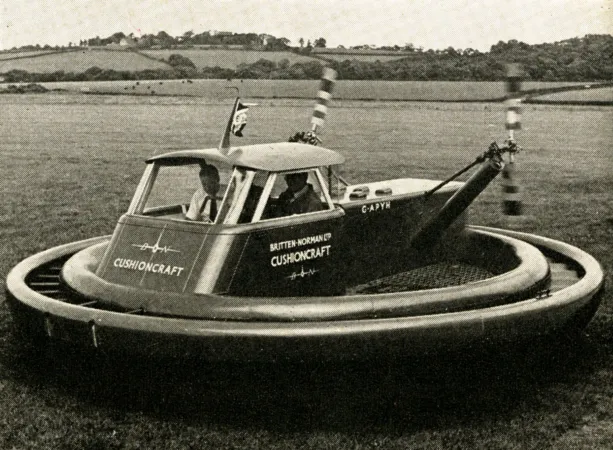

































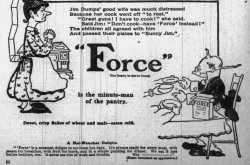
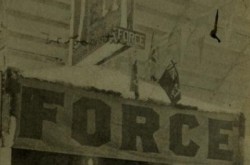
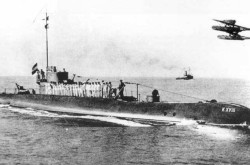
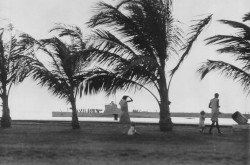
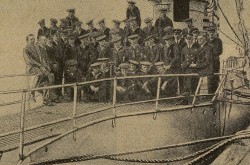
![A block of photographs showing some of the people involved in the bombing of beluga whales in the estuary and gulf of the St. Lawrence River. Anon., “La chasse aux marsouins [sic]. » Le Devoir, 15 August 1929, 6.](/sites/default/files/styles/thumbnail_7/public/2024-09/Le%20Devoir%2015%20aout%201929%20page%206.jpg?h=584f1d27&itok=TppdLItg)
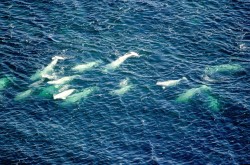
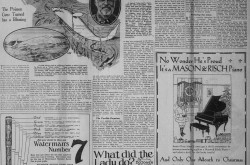
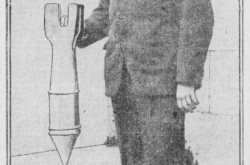
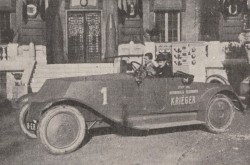
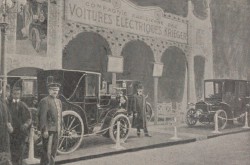
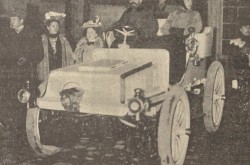
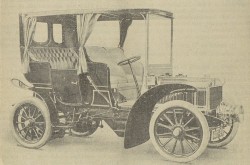

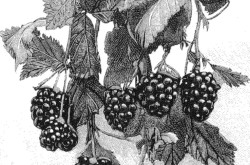
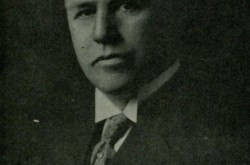
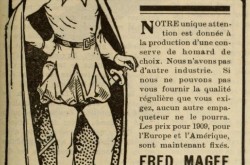
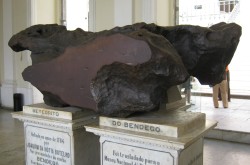
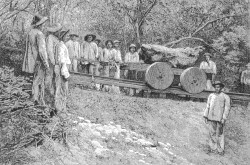
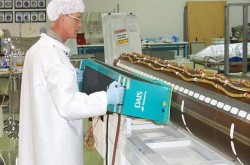
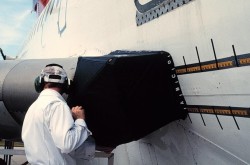
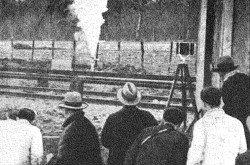
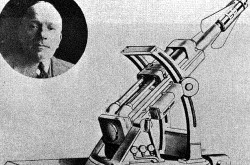
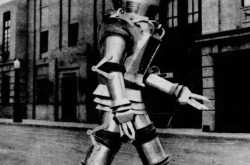

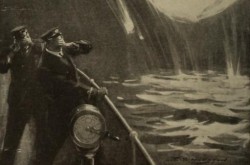
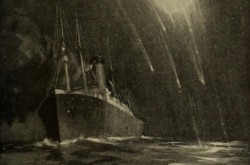
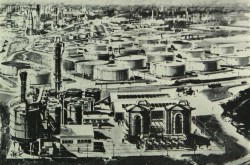
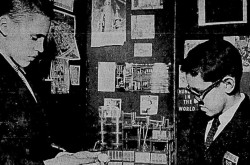
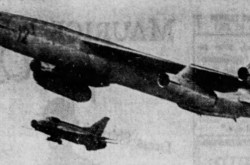
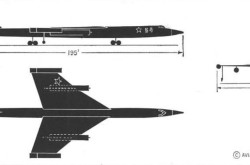
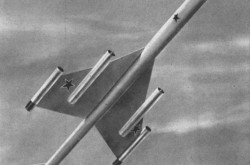
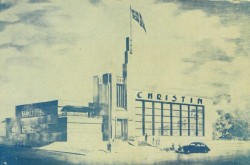
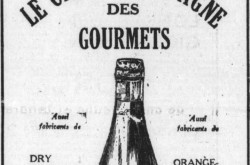
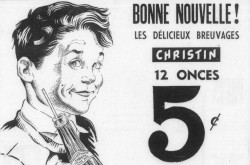
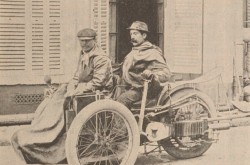
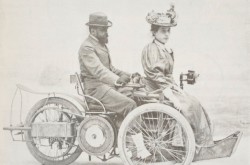
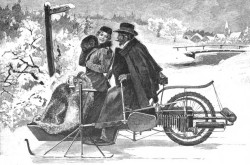
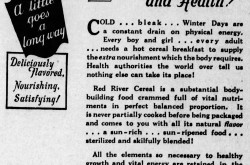
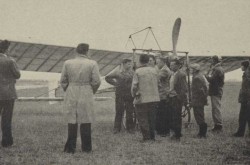
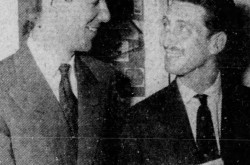
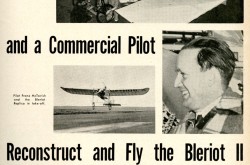
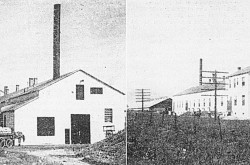
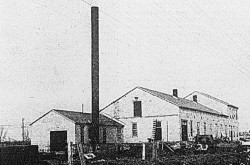
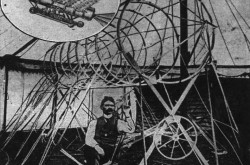
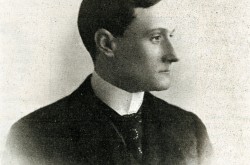
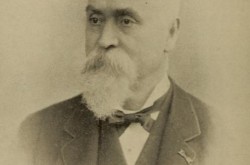
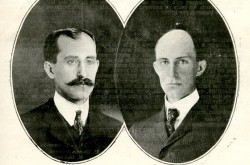
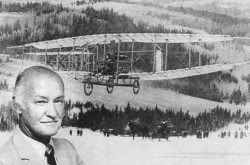
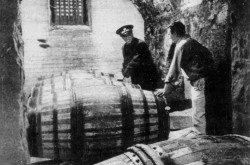
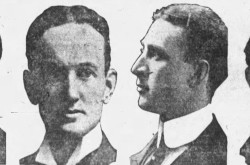
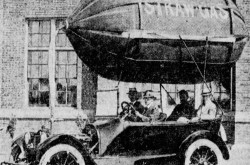
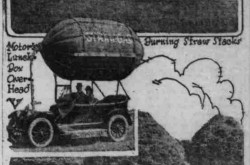
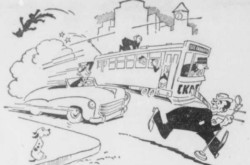
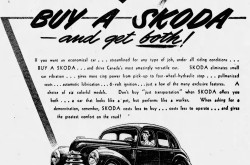
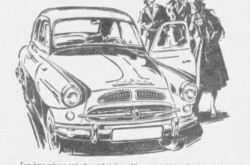
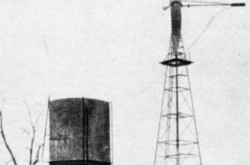
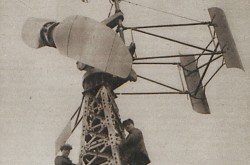
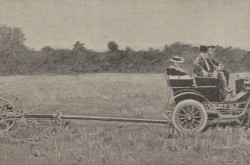
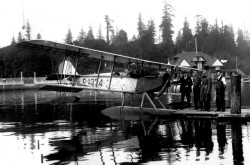
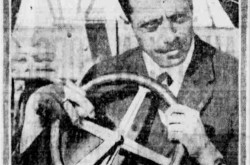
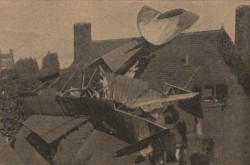
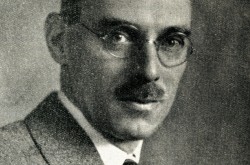
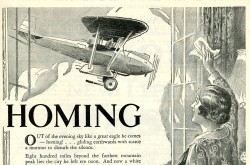
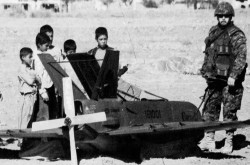
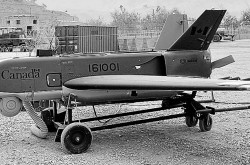
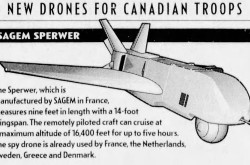
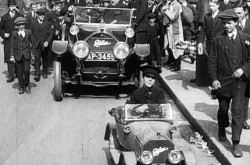

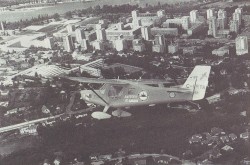
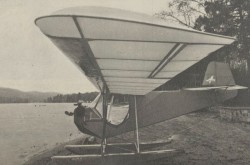
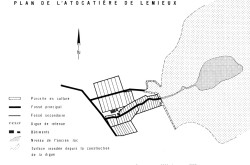
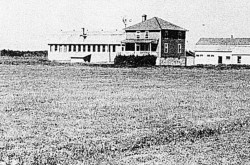
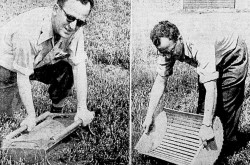

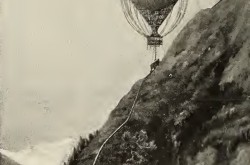
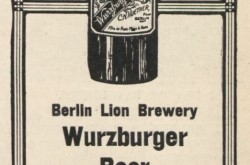
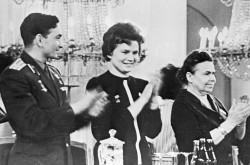
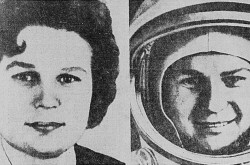
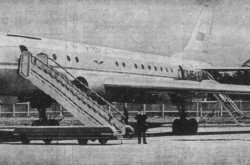
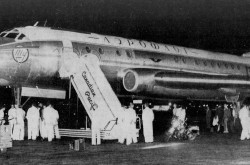
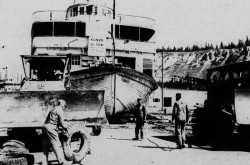
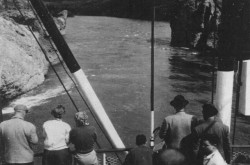
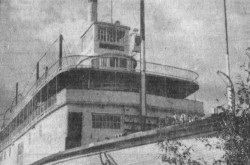
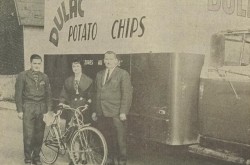
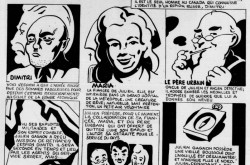
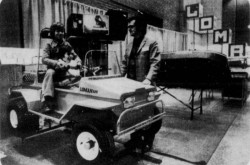
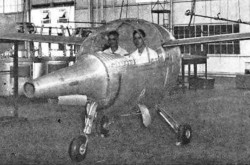
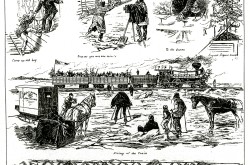
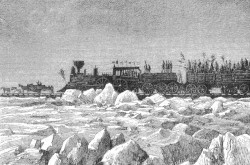
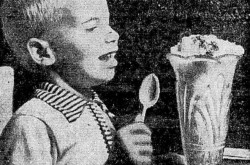
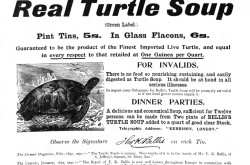
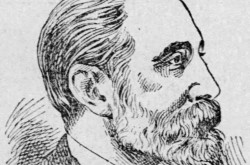
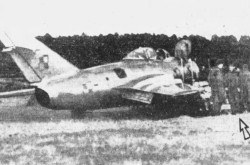
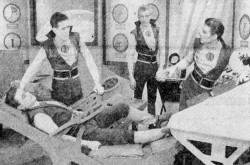
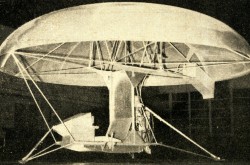
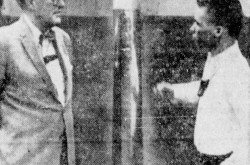
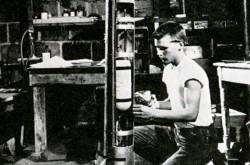
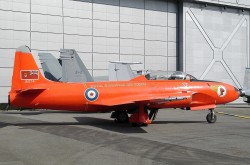
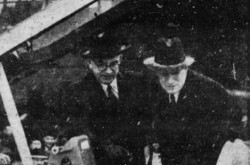
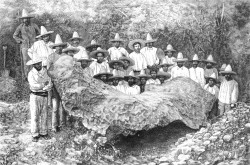
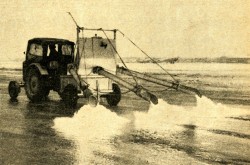
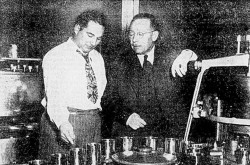
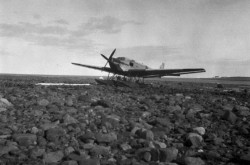
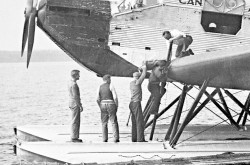
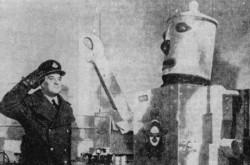
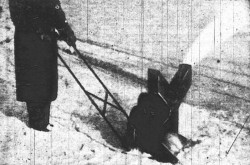
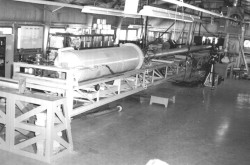
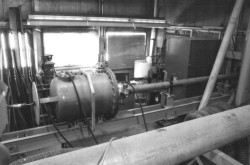
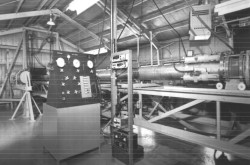
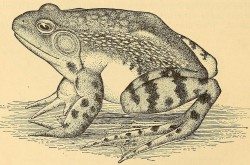
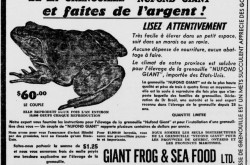
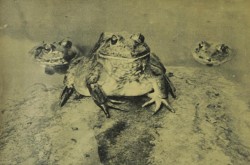
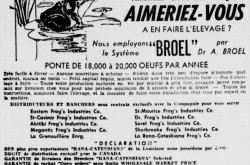
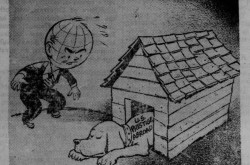
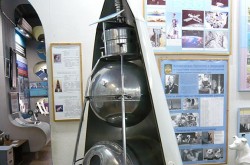
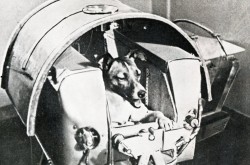
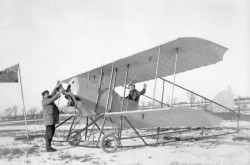
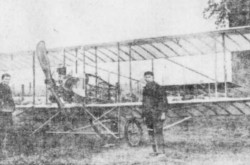
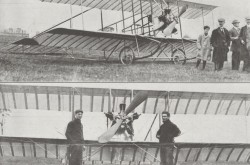
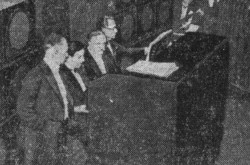

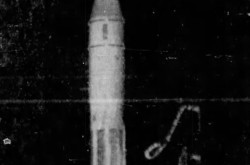
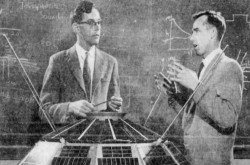
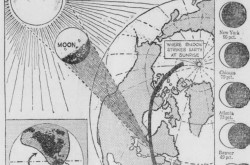
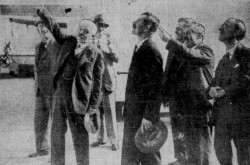
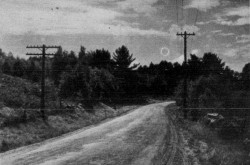

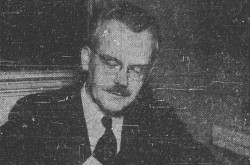
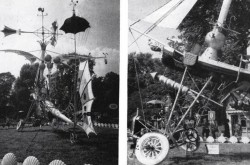
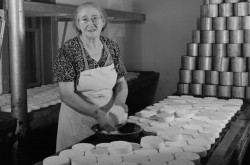
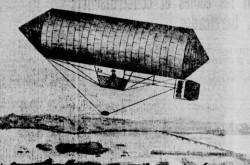
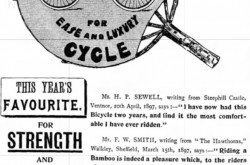
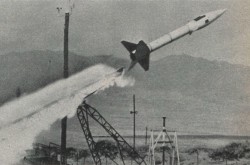
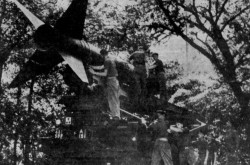
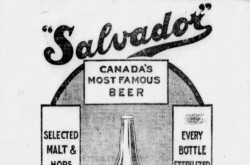
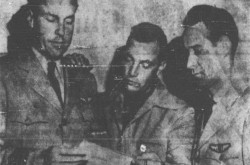
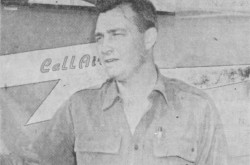
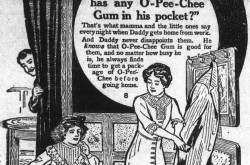
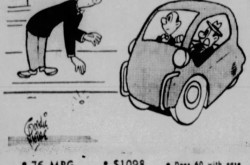
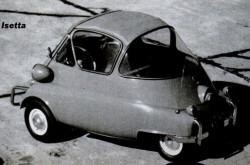
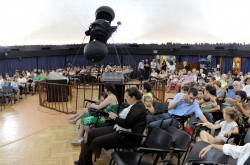
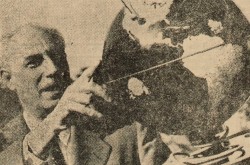
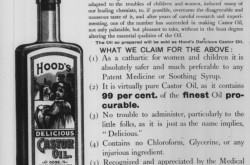
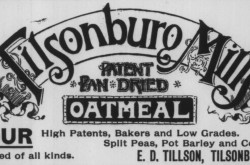
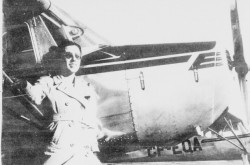
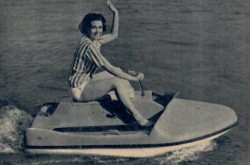

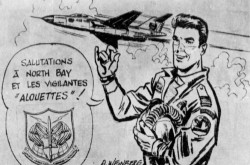
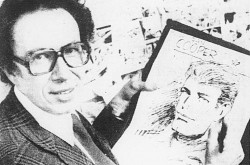
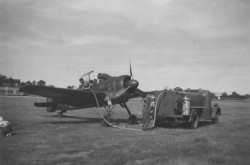
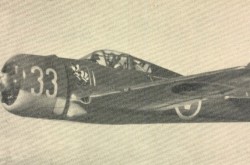
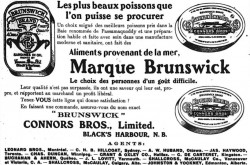
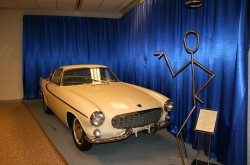
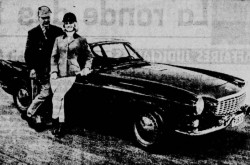
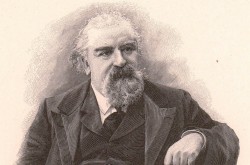
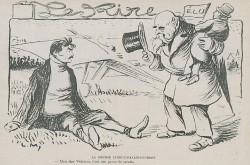
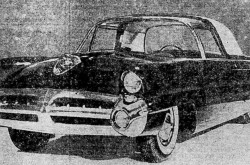
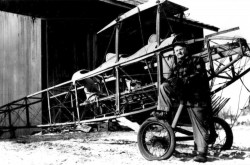
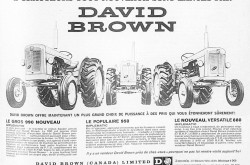
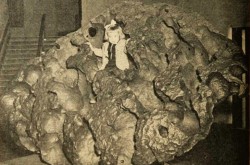
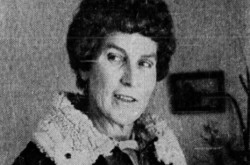
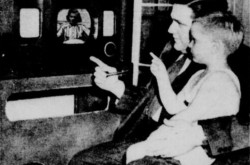
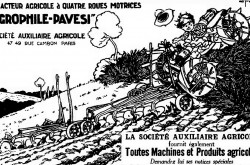
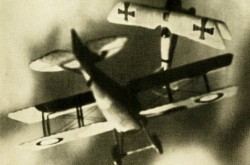
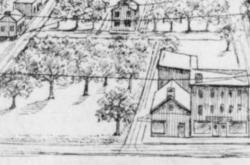
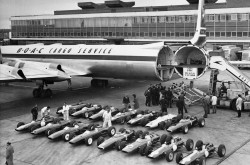
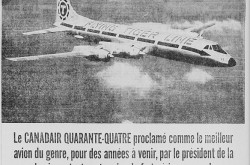
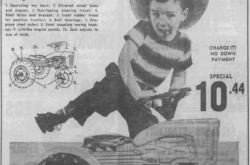
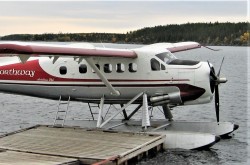
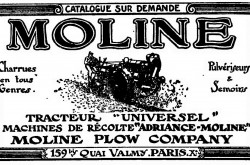
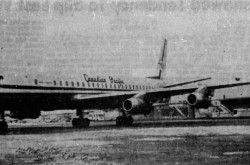
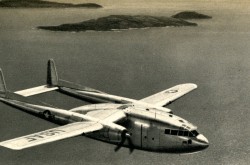
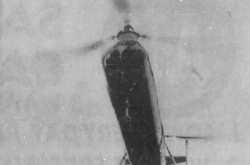
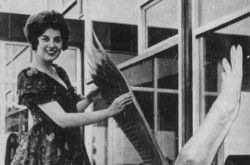
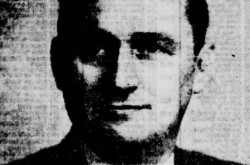
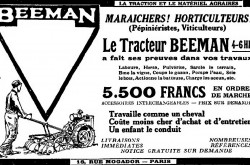
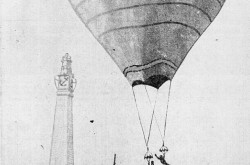
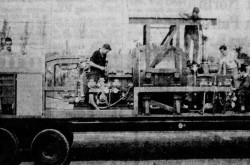
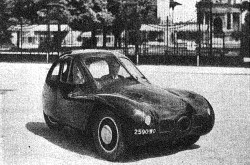
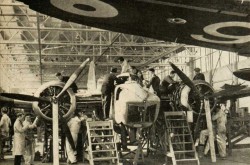
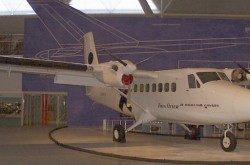
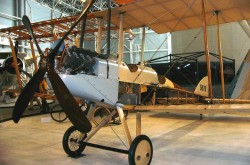
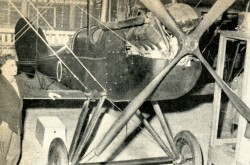
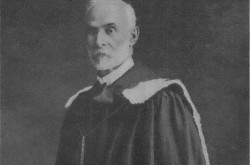
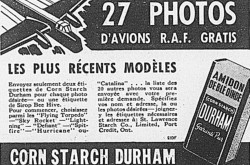
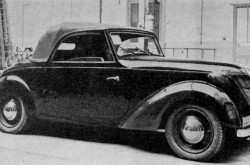
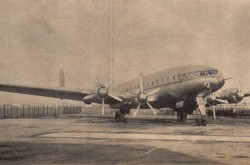
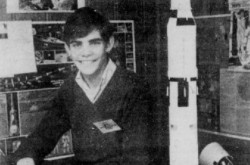
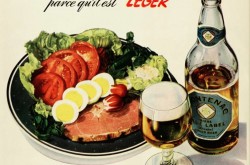
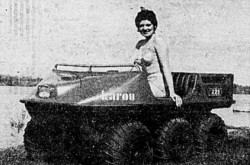

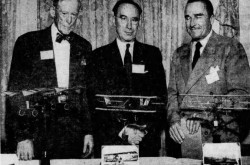
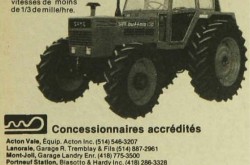
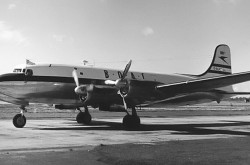
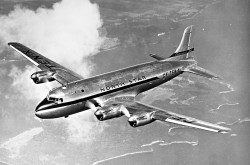
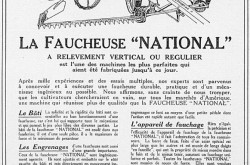
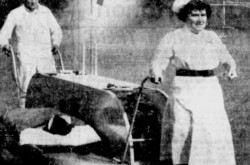
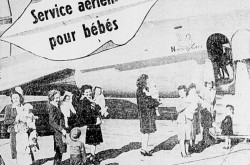
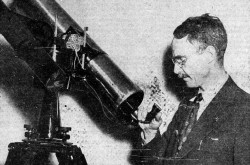
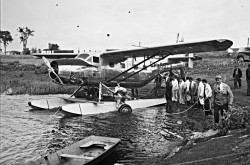
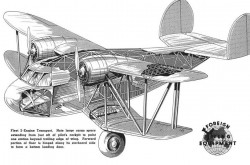
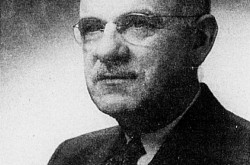
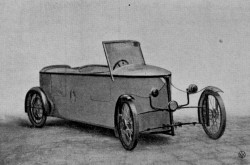
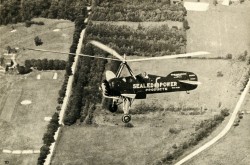
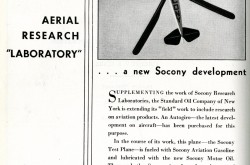
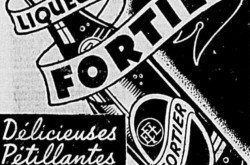
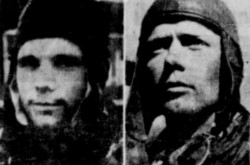

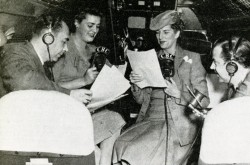
![Peter Müller at the controls [sic] of the Pedroplan, Berlin, Germany, March 1931. Anon., “Cologne contre Marseille – Le mystère du ‘Pédroplan.’ [sic]” Les Ailes, 2 April 1931, 14.](/sites/default/files/styles/thumbnail_7/public/2021-04/Les%20Ailes%202%20avril%201931%20version%20big.jpg?h=eafd0ed4&itok=WnBZ5gMf)
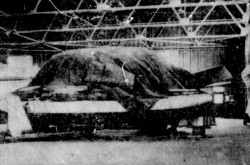
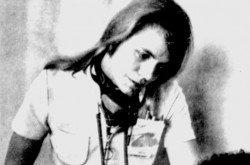
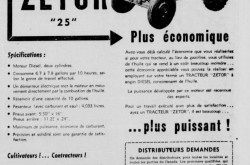
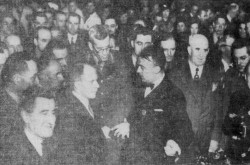
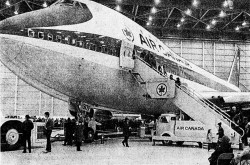
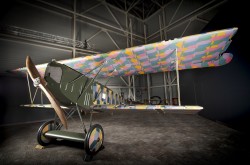
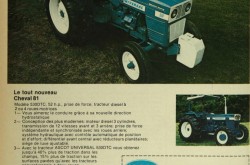
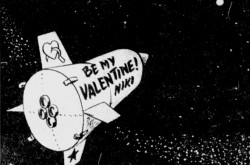
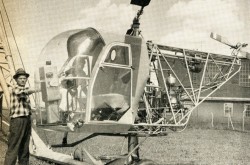
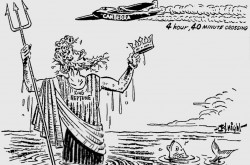
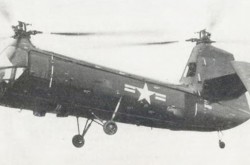
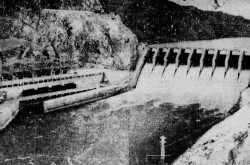
![One of the first de Havilland Canada Chipmunk imported to the United Kingdom. Anon., “De Havilland [Canada] DHC-1 ‘Chipmunk.’” Aviation Magazine, 1 January 1951, cover.](/sites/default/files/styles/thumbnail_7/public/2021-01/Aviation%20magazine%201er%20janvier%201951%20version%202.jpg?h=2f876e0f&itok=DM4JHe5C)
